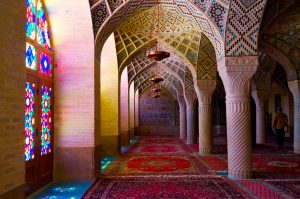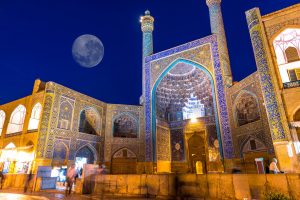In recent years, Iran tourism has seen a slow increase in numbers. After years of tension, the signing of the Iran Nuclear Deal saw major European airlines once again flying to the country’s capital, Tehran.
In 2015, Iran entered into a long-term deal concerning its nuclear programme with the P5+1 countries (the United States, the United Kingdom, Russia, France, and China—plus Germany). Formally known as the Joint Comprehensive Plan of Action, it was aimed at ensuring that Iran’s nuclear program would be “exclusively peaceful”. In exchange, many severe sanctions regarding trade, technology, finance, and energy were lifted.

Spearheaded by the American Obama Administration, it also led to the resumption of direct flights from London, Paris, and Amsterdam by British Airways, Air France, and KLM. Hotel chains and tour operators had also begun welcoming visitors and tourists to the Islamic country.
A New Life For Iran Tourism
While this didn’t quite ignite new interest in the Middle Eastern country, it allowed those already interested to finally travel to Iran. With both a rich culture and an ancient heritage to be explored, it was on its way to becoming a popular heritage destination.

The country boasts over 20 UNESCO World Heritage Sites, including the beautiful city of Isfahan, the ancient city of Pasargadae, the colorful Golestan Palace, and the ruins of Persepolis.
Iran saw only 300,000 international visitors in 2003, but by 2015 that number had increased to over 5 million. As relations improved with other nations, that number even increased to 6 million in 2017. Encouraged by growing numbers, the country’s tourism ministry had recently set a target of 20 million by 2025.

What Does The Future Hold?
However, recent political changes, on-going conflicts with Syria and Israel, and the decision of the Trump administration to withdraw from the deal have thrown Iran tourism into turmoil. This had resulted in a steep drop in tourist numbers, especially from American visitors. Last week, the UK’s Foreign Office also warned of “heightened risk of politicised demonstrations”.

The UK, France, and Germany have all condemned the decision to withdraw from the deal. While they have promised to stay within the agreement, developments continue. It remains to be seen how this will affect travellers, even those with a passion and a pull to see the history and culture of Iran.


